Nowadays there is such a huge variety of solutions on the electronics market that some users have difficulty choosing a device based on some parameters. And here the question may well arise, which is better: IPS or TFT, and what differences there are in these technologies. In equipment catalogs, namely in descriptions of displays, you can find a lot of incomprehensible information that prompts you to search for answers.
Technology Features
So, to determine which is better: you need to know how both matrices work, that is, what principles are underlying them. The first is inherently a more advanced version of the second, that is, a slightly different approach was used when creating it.
TFT is a method of producing liquid crystal display matrices in which the crystals are arranged in a spiral between a pair of plates. If voltage is not applied, then they rotate in a horizontal plane to each other at right angles. At maximum voltage, they are rotated so that light passing through them produces black pixels, and when there is no voltage, white. If we talk about which is better: IPS or TFT, then the first technology differs from the second in that the crystals in such a matrix are not arranged in a spiral, but in a screen and in relation to each other. When voltage is not applied, the crystals do not rotate, which is how this matrix differs from the previous one.
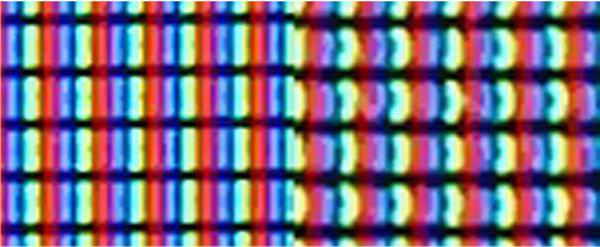
The difference from the user's point of view
So, when considering the question of which is better: IPS or TFT, it is worth saying that the visual difference here is greater contrast, providing almost perfect reproduction of black. Thanks to this, the image is very clear. Using TFT matrices we can talk about low color rendering quality. In this case, each pixel has its own shade, which does not match the others. Colors may be greatly distorted due to this. But such a solution also has considerable advantage, namely a high response speed in comparison with all existing ones. this moment. An IPS screen requires a certain amount of time for the parallel crystals to fully rotate. The human eye hardly detects the difference in response time.
Important points
Understanding which is better: an IPS or TFT display, it is worth noting that the first option has greater energy consumption. This is associated with the need for more energy to rotate the crystals. When it comes to the need to ensure maximum energy efficiency, the manufacturer opts for TFT matrices. However, IPS technology is characterized by very wide viewing angles, up to 178 degrees. This ensures maximum ease of use. All other matrices cannot provide such an overview. Currently, TFT is the simplest and cheapest solution used in most models of devices in the budget segment. At the same time, IPS is usually classified as a higher level, but it cannot be called top-end, since at the moment there are more advanced developments.
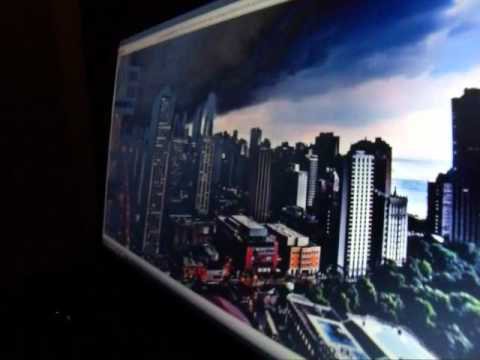
The first is characterized by a short response time and optimal energy consumption, but the color rendering level is in this case a little behind other technologies. The IPS matrix provides excellent color reproduction, optimal contrast, and large viewing angles, but it is also characterized by high energy consumption required for operation.
There is simply a huge gap in terms of quality between screens using these two technologies. The same applies to cost. TFT matrices remain on the market only because they are so cheap.
Still in development IPS(In Plane Switch) was used especially for professional monitors, since it allows the color gamut to be transmitted most correctly of all production technologies.
Advantages of technology
IPS- the development was developed by Hitachi and NEC in 1996 as an alternative to TN technology (Twisted Nematic). In real time, matrices made using IPS technology, are the only LCD monitors that transmit the full RGB color depth - 24 bits, eight bits per channel.
Unlike, in IPS matrices The crystals do not form a spiral, but rotate when an electric field is applied, all together. Changing the orientation of the crystals helped to achieve one of the main advantages of IPS matrices - an increase in viewing angles up to 178° horizontally and vertically. If no electronic voltage is applied to the IPS matrix, the liquid crystal molecules do not rotate. The second filter is always turned perpendicular to the first, and no light passes through it. Therefore, the display of black color is close to ideal. If the transistor fails, the “broken” pixel for the IPS panel will not be white, as for the TN matrix, but black. When an electrical voltage is applied, the water crystal molecules in the IPS matrix rotate perpendicular to their initial position and transmit light. Thanks to the constant color temperature across the entire spectrum, the colors are most consistent with the original image and convey the most adequate colors from any digital media. As can be seen in the figure, the IPS matrix most adequately conveys colors across the entire spectrum at different viewing angles, with the exception of some color positions. The TN matrix usually has a better response than IPS, *Oh *my* but not always. So, when transitioning from gray to gray, the IPS matrix behaves better. This matrix is also resistant to pressure. Touching the TN or VA matrix results in a "excitement" or a certain reaction on the screen. U IPS matrices there is no such effect. In addition, ophthalmologists confirm that the IPS matrix is the most comfortable for the eyes. In this *s*m* way, the IPS matrix brings a bright and clear picture regardless of viewing angles, best for surfing the Internet and watching movies. But the most important thing is for image processing and viewing photos.
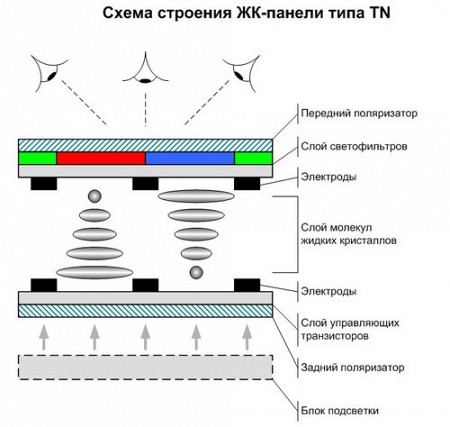


Existing offers
Today the market mainly presents TN panels. TN is the most basic and cheapest technology. However, since such monitors suffer from insufficient viewing angles, manufacturers are developing other technologies. Thus, Samsung is promoting VA (Vertical Alignment) technology developed by Fujitsu, which is considered a compromise between TN and IPS, both in cost and in consumer qualities. Although, in general, this is no longer so obvious due to the launch of economical models of IPS monitors from LG. *E *mine* In turn, they also have good viewing angles - up to 176-178°, although in this indicator they are all equally behind IPS. As for existing offers, prices for professional IPS monitors with a 23-inch display start at $500, so they are out of competition with new models from LG, which will cost the buyer $250-three hundred.
Prospects
It goes without saying that IPS, taking into account lower prices, can displace competitive technologies. LG is also making definite plans for sales of the latest IPS monitors, which has outlined them as one of the key strategic directions in 2011. And if in 2010 we were talking about hundreds of sales of devices on IPS matrices in Ukraine, because this year, according to company representatives, several tens of thousands of such devices will be sold. At the same time, the company does not disclose exact sales plans. It is obvious that competitors will not sleep at this time either. Companies such as NEC, HP and Dell will also launch their budget models, and Samsung will continue to refine and promote VA models. However, it is also quite obvious that LG, by being proactive, is capable of cutting off a significant market share this year. It also has a careful approach to the design of new models, advertising initiatives and a price blow to low-income consumers.
Source: itnews.com.ua
22 comments:
1) philatelist.by: (2013-12-04 15:44:26 )
Thank you for the article!
2) Anton: (2014-01-09 13:32:58 )
LG doesn't listen to consumers. Their monitor stands resemble matches - not reliable. But it is so. And the article is useful. Thank you.
3) Sasha: (2014-01-25 10:22:02 )
4) Tamara: (2014-02-07 16:55:46 )
The information is interesting and useful. Thank you very much. article
5) Vadim: (2014-02-18 19:13:49 )
Thank you!!!
6) egot: (2014-03-08 19:34:54 )
Informative
7) Vugar: (2014-05-16 22:13:03 )
8) Vugar: (2014-05-16 22:14:17 )
Thanks, very interesting.
9) Dima: (2014-07-09 20:18:12 )
I don’t know much about IPS matrices
10) Alex: (2014-11-20 15:19:26 )
In turn, VA monitors also have good viewing angles - up to 176-178°, although in this indicator they are all equally behind IPS.
The meaning of the sentence is shrouded in a veil of terrible and frightening mystery!
11) Rina: (2014-11-28 09:33:30 )
cool article!
12) waha: (2014-11-30 15:27:38 )
duzhe ts1kava statya
13) guest: (2014-12-28 12:31:51 )
Thank you very much
14) Natalya: (2015-05-27 01:11:22 )
Thank you, great site, it helped.
15) Alexey: (2015-09-08 22:26:42 )
thanks for the info
16) Elena: (2016-01-06 12:54:58 )
"..IPS (In Plane Switch) development has been used exceptionally for professional monitors.."
PPC, the article from the first line is intriguing with its unusualness))
17) Igor: (2016-06-11 16:19:21 )
Well, if Samsung supports VA technology, then VA is shit. Because Samsung only produces crap
18) Sashaka: (2016-12-30 00:34:43 )
It was 2016 and the notes were still mostly with TN matrices
19) Maga_mountain: (2017-06-14 00:18:29 )
thank you :) paznaVAtylna
20) Bsktzmoi: (2017-09-09 18:28:38 )
Tell me who has come across whether this topic works:
We pay for likes! - Payouts daily!
Our service provides real likes on photos for customers who are willing to pay for quality.
This is precisely why we recruit remote employees who will do the work, that is, give likes and earn money for it.
To become our remote employee and start liking, while earning 45 rubles per 1 like,
You just need to register on our service. > www.oplata-vklike.tk Withdrawal of earned funds daily within a few minutes.
Thank you in advance!
21) Ksenya: (2017-09-19 15:03:00 )
22) Yuri: (2017-09-28 15:38:36 )
Thanks, I'm going to buy a phone. LG with IPS matrix!
This technology for manufacturing matrices has already become firmly established modern world. She has enough competitors.
But in order to understand which technology is better, you need to understand what IPS matrices are and why they are better.
The name “IPS” itself stands for In-Plan-Switching, which can be literally translated as "intra-site switching".
Simply put, this technology allows you to display a picture on a monitor with a more active matrix.
IPS matrices mean a type of liquid crystal screen. This type was discovered by Hitachi and NEC as a result of research in 1996.
At the moment, LG has also taken up improving this technology. We developed this technology as an alternative to TN+film LCD displays.
Quite a lot of manufacturers use equipment with this type of display manufacturing technology, since it can significantly improve color rendition and image quality.
The companies include LG, Samsung, NEC, Dell and many others.

What is IPS
From other LCD manufacturing technologies IPS distinguishes the arrangement of liquid crystal crystals.
They are not located in a spiral, as was common before, but parallel to each other.
This significantly improves the quality of the transmitted image, and also increases brightness and clarity.
Unlike the already outdated TN-TFT technology, the picture on a monitor with an IPS matrix can be clearly seen even in direct sunlight and at any angle.
The standard viewing angle of the picture on this matrix is 178 degrees.
How LCD screens work
The operation of liquid crystal screens is based on polarization.
Typically, the light we see is not polarized. This means that its waves lie in many different planes.
There are substances that can bend light into one plane, and such substances are called polarizers.
Light will not be able to pass through two polarizers whose planes are located 90 degrees relative to each other.
When another substance is placed between them, capable of changing the vector of incidence of light to the required angle, then we will be able to control the brightness.
The simplest LCD screen matrix contains the following parts:
- backlight lamp, mostly mercury;
- reflectors and polymer light guides, which provide uniform illumination in the system;
- polarizer filter;
- glass plate substrate with contacts applied to it;
- liquid crystals;
- another polarizer;
- covering glass substrate with contacts.

In addition to the standard filter, the color matrices have a built-in color filter. Each pixel consists of dots of three colors, collected in cells - red, blue and green.
Each of the cells is either on or off, thereby forming shades and colors. If you turn on all the cells at the same time, it will give white color.
Matrices can be divided into passive and active. Passives are otherwise called simple. In them, control is pixel-by-pixel, which means from cell to cell.
When manufacturing liquid crystal screens using this technology, a problem often arises that as the diagonal increases, the lengths of the conductors that transmit current to the pixels automatically increase.
This problem is expressed in the fact that if the conductors are too long, during the transfer of changes to the last pixel, the first one will already be discharged and turn off.
Also, due to the long length, the tension deteriorates.
This problem was solved by the creation of active matrices. The main technology was TFT (Thin Film Transistor).
This technology makes it possible to control pixels individually, which significantly reduces the response time of the matrix.
Thus, it became possible to create monitors and televisions with the largest diagonals.
The transistors are located separately and do not depend on each other. Each pixel cell has its own transistor.
To prevent the cell from losing charge, a capacitor is connected to the pixels, which acts as a capacitance buffer. Thanks to this, the reaction time is significantly reduced.
Types of IPS matrices
For all the time that exists this technology, many types of IPS matrices have been created. They were improved for clearer and higher-quality image transmission.
Today there are 7 types of matrices:
1 S-IPS ( Super IPS) – This type was created in 1998. It has significantly increased image contrast and reduced response time.
2 AS-IPS (Advanced Super IPS) – This technology was discovered in 2002. It has increased brightness and further increased contrast, due to which the quality of image transmission has significantly improved.
3 H-IPS (Horizontal IPS) – This type was created in 2007. In it, the developers optimized the transmission of white color, and also further increased the contrast. This improvement made it possible to make pictures with more naturalness. Photo editors were most pleased with this improvement, since many details became more visible when editing photo elements.
4 E-IPS (Enhanced-IPS) - This type was developed in 2009. The innovation has reduced response time and improved transparency. Also, such matrices have lower power consumption. This is achieved by installing low-power and inexpensive backlight paws in them. Accordingly, image quality is slightly reduced due to lower power consumption.
5 P-IPS (Professional IPS) – In 2010, more than the new kind IPS. The number of colors and shades was significantly increased, making the image even more colorful and detailed. This type of matrix is used in more professional equipment, so it is more expensive.
6 S-IPS II (Super IPS II) – An improved version of the first type. It was developed immediately after P-IPS.
7 AH-IPS (Advanced High IPS) – Today, this is the most best view IPS matrix, which was developed back in 2011. It has greatly improved the naturalness, brightness and clarity of the transmitted image. At the moment, this type is the main one in the manufacture modern technology with displays.
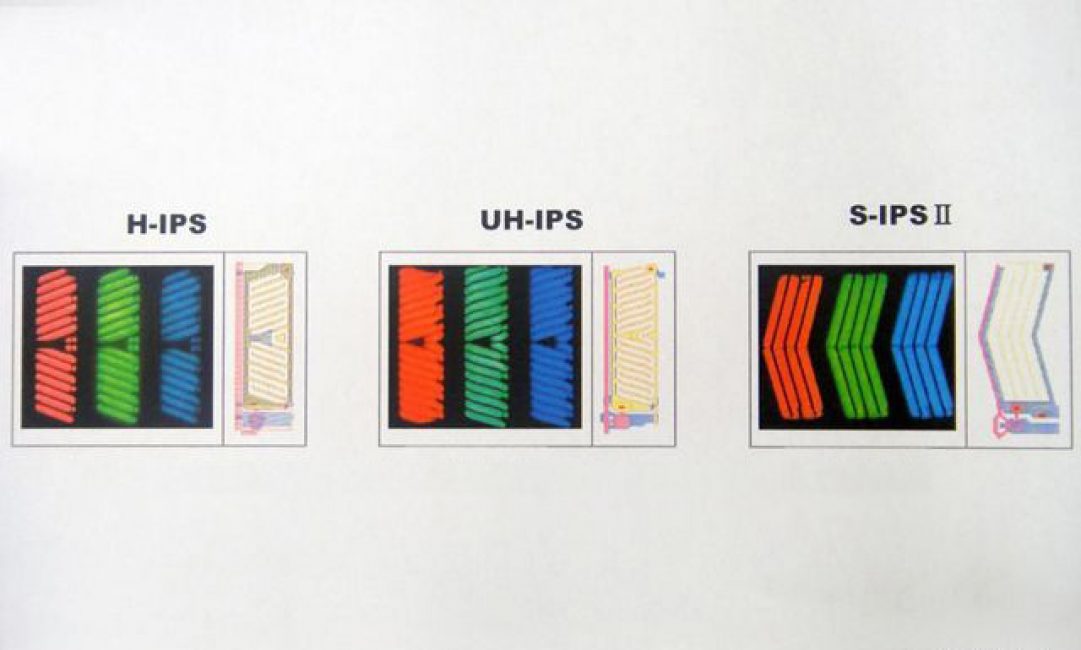
Types of backlighting for IPS matrices
Absolutely any matrix has a built-in backlight. In IPS, the main backlight types are fluorescent lamps and LED backlighting (LED).
Fluorescent is a more outdated type of lighting. Today it is quite rare to find her. This type of lighting began to disappear from the market in 2010.
LED backlighting is found in 90% of matrices. It improves color reproduction and brightness of screens.
When choosing a matrix, you should undoubtedly give preference to screens and monitors with this type of backlight.
It will also increase the contrast and clarity of the image on the screen and will prevent your eyes from getting tired when working for a long time.

Advantages and Disadvantages of IPS
This type of matrix has a large number of benefits. The main one is improved color rendering and brightness.
You can also note the increased viewing angles, thanks to which the image will be clearly visible from any angle.
Another integral advantage is that the pixels are very clearly visible on this type of matrix.
Users note that the black color on the IPS matrix is blacker. Other colors are more saturated on the screen.
Among the disadvantages, one can note the high cost. Despite the fact that the technology has been on the market for quite some time, its cost is still high.
This is due to higher performance, as well as the high cost of raw materials.
Another disadvantage is low performance. While for TN matrices the image switching time is 1 ms, for IPS this figure is 8-10 ms.
Users also noted high inertia, which slightly slows down the frame rate when watching movies in 3D format.
Comparison of IPS and TFT displays
TFT displays are a type of LCD display that uses an active matrix controlled by thin film transistors. She enhances every pixel, improves performance and contrast.
The most advanced creation is considered to be TFT IPS (IPS is a type of TFT), this is manifested in the fact that the liquid crystals in it are arranged in parallel, when current passes through them, they slenderly and quickly turn in the other direction.
The viewing angle of such displays reaches 180 degrees, and the picture has high contrast and good color rendition.
The latest models of iPhones and iPads have chosen the IPS version, but the number of pixels per specific unit of area.
This may be an indication of which of these options is more worthwhile, reliable and has the potential for development.
TVs with IPS
The screen diagonal of this TV is 40”. It is also equipped with an IPS matrix.
The screen is thin and the design is very high quality. Resolution 1920x1080 pixels.
The backlight is LED. Since the matrix is installed with IPS technology, the viewing angles are corresponding – 178 degrees.
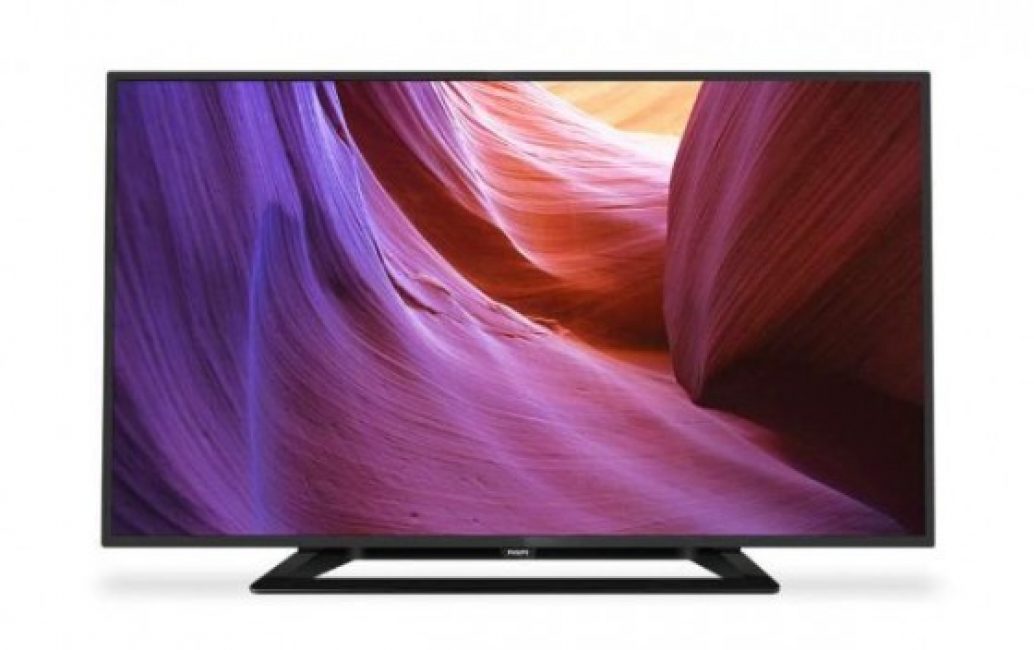
This model has the same diagonal as the previous one – 40”.
Equipped with an IPS matrix, which is illuminated using strip-type LED backlighting.
The resolution of this TV is standard – 1920x1080 pixels. Viewing angles correspond to the standard matrix type and are 178 degrees.
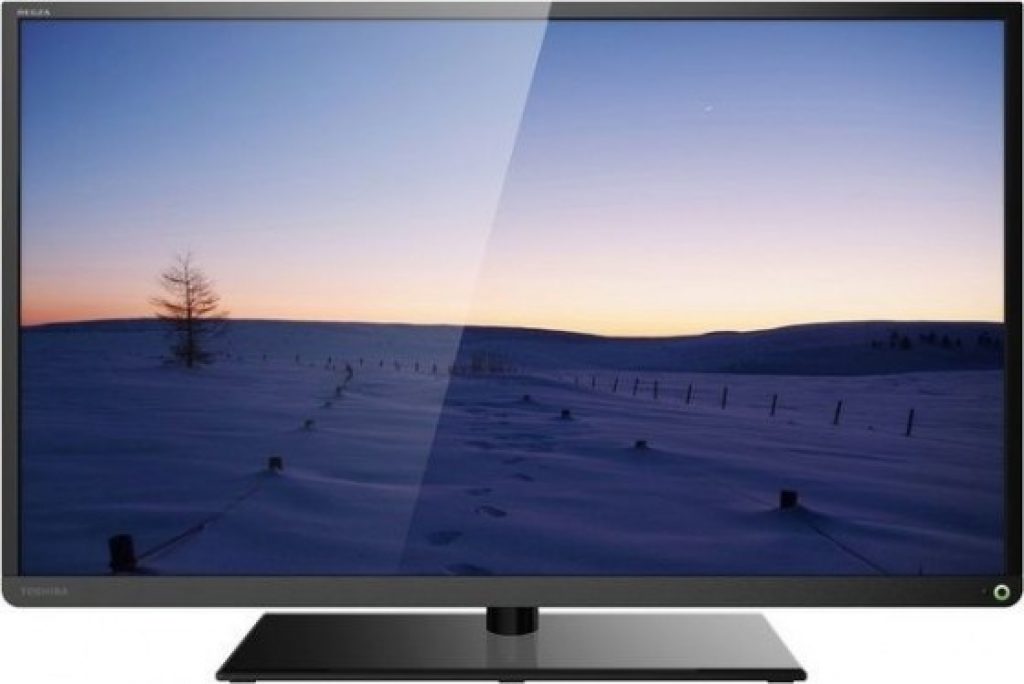
LG 32LF510U
Since LG has been improving IPS matrix technology in recent years, they undoubtedly supply their own equipment with this type of matrix.
This TV model has a diagonal of 32” and a resolution of 1366x768 pixels. However, this does not affect the image quality in any way.
The viewing angles, like all devices with an IPS matrix, are 178 degrees.
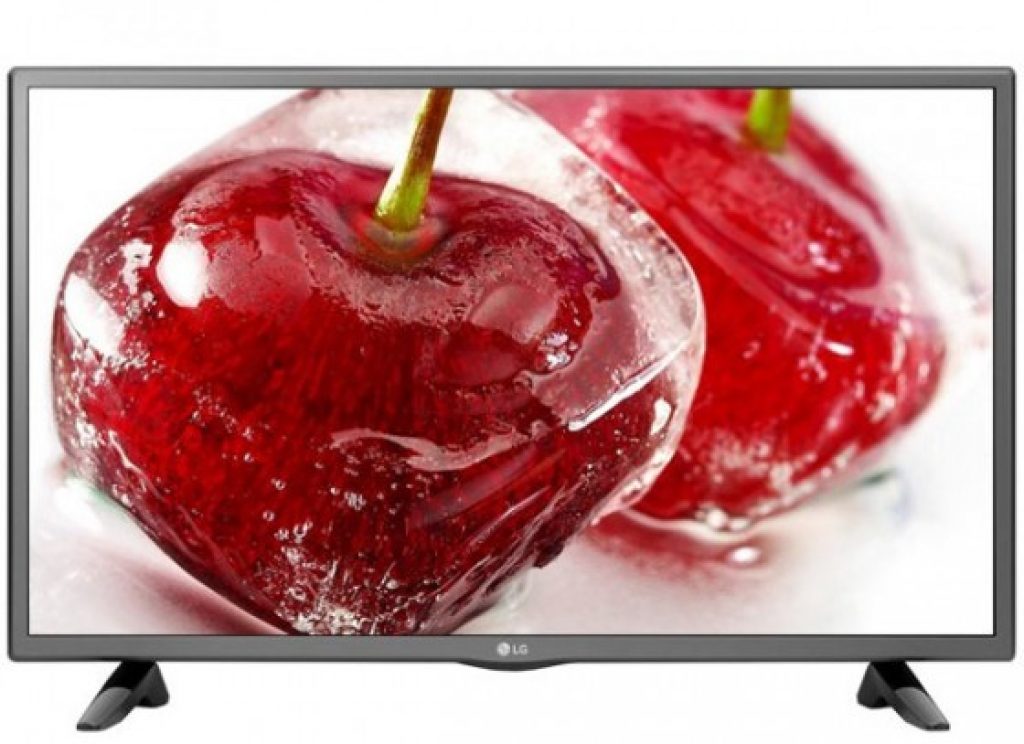
The diagonal of this TV is the same as LG’s – 32”. An IPS matrix with a standard resolution of 1920x1080 pixels is installed.
The viewing angle is 178 degrees, which is standard for a matrix of this type.

Laptops with IPS
The screen of this laptop model has a diagonal of 14” with a built-in IPS matrix.
The matte finish of the Acer SWIFT 3 screen does not reflect when exposed to direct light.
The viewing angle is 178 degrees, which is the standard for this type of matrix. Resolution - 1920x1080 pixels.
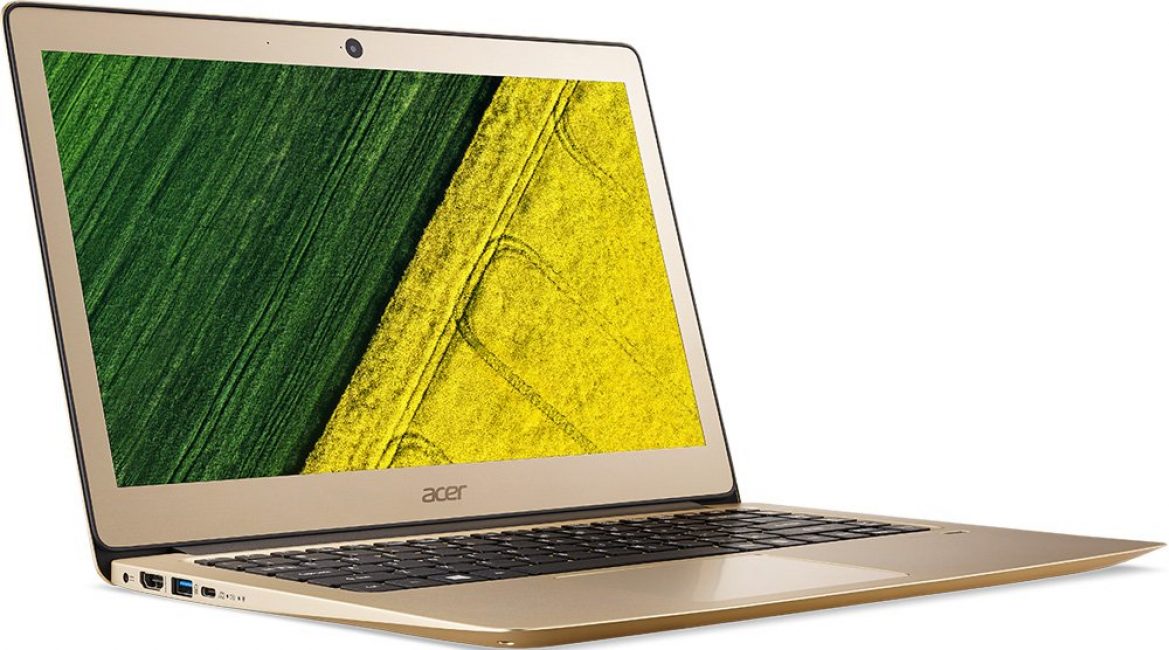
This laptop model has an IPS matrix with a resolution of 1920x1080 pixels or 3840x2160 pixels (depending on the modification). Screen diagonal 15.6“.
The viewing angle is standard for IPS 178 degrees.
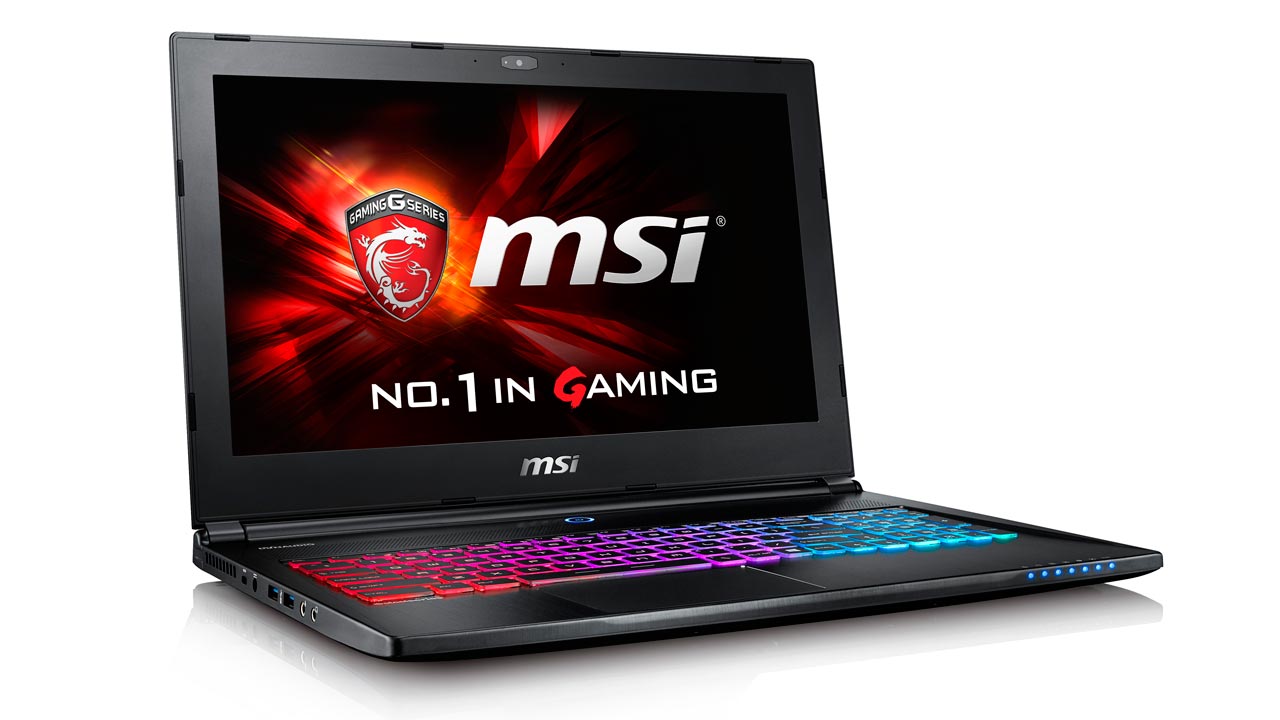
The resolution of this model is somewhat non-standard - 3200x1800 pixels, and the diagonal is 13.3 inches.
An IPS matrix with a viewing angle of 178 degrees is installed, which is the standard for this type of matrix.

The screen diagonal of this model is 13.3 inches. Standard resolution – 1920x1080.
It has an IPS matrix, thanks to which the image is very good and clear, and the color rendition and brightness are “top notch.” The viewing angle is 178 degrees.
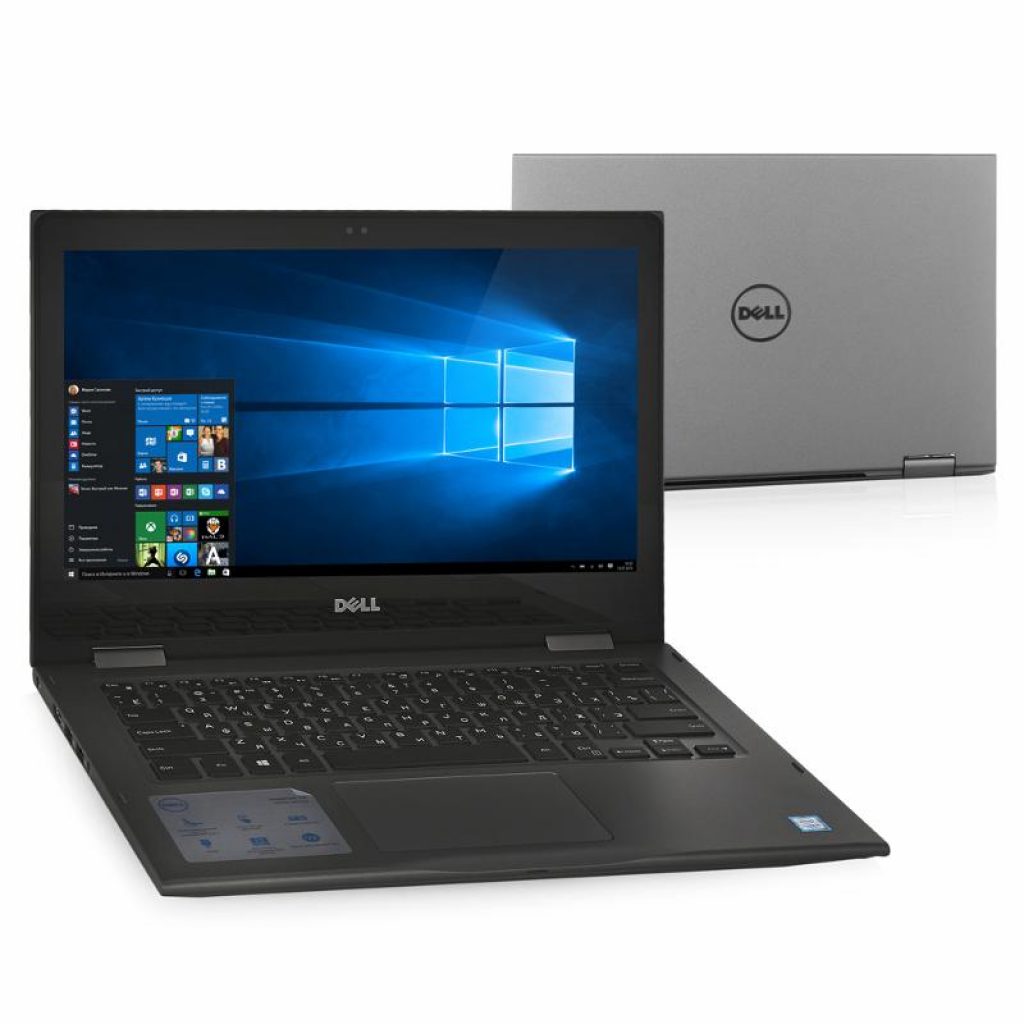
The resolution of this model is somewhat non-standard and is 2560x1600 pixels. The diagonal of the laptop screen is 13.3 inches.
An IPS matrix with a standard viewing angle of 178 degrees is installed.
Due to this and many other factors, maximum image quality and clarity is achieved.
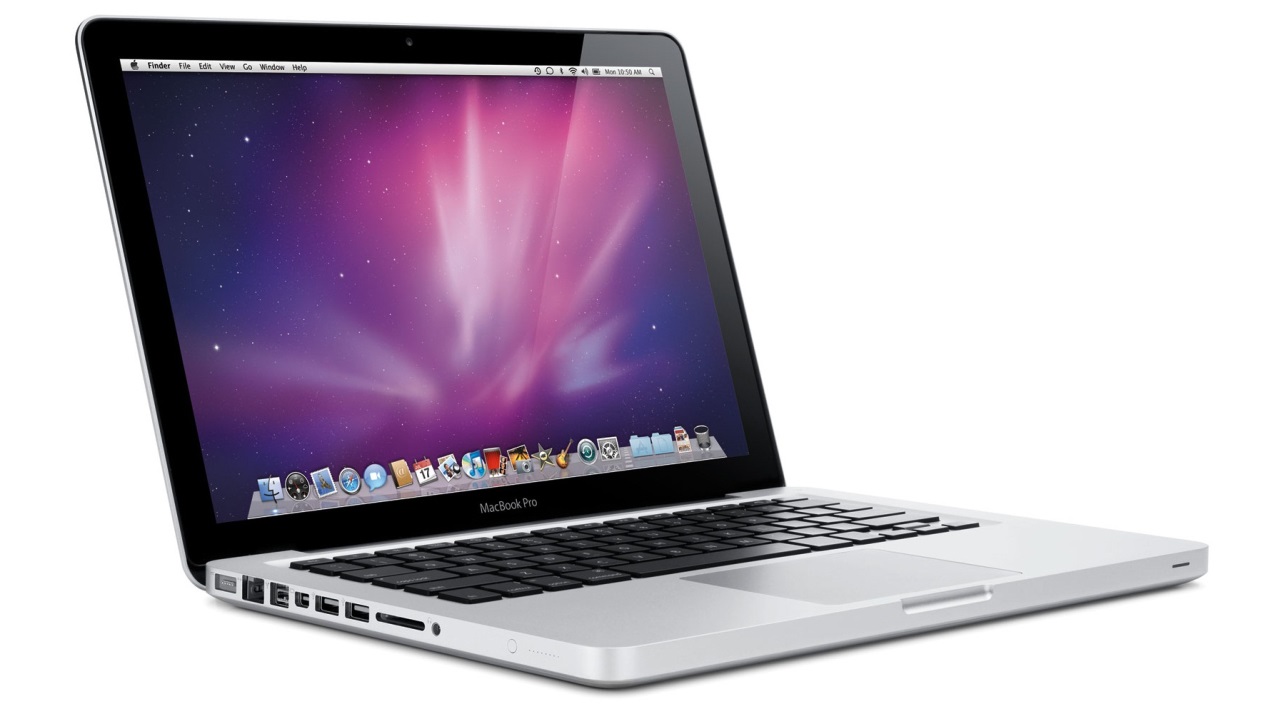
Phones with IPS
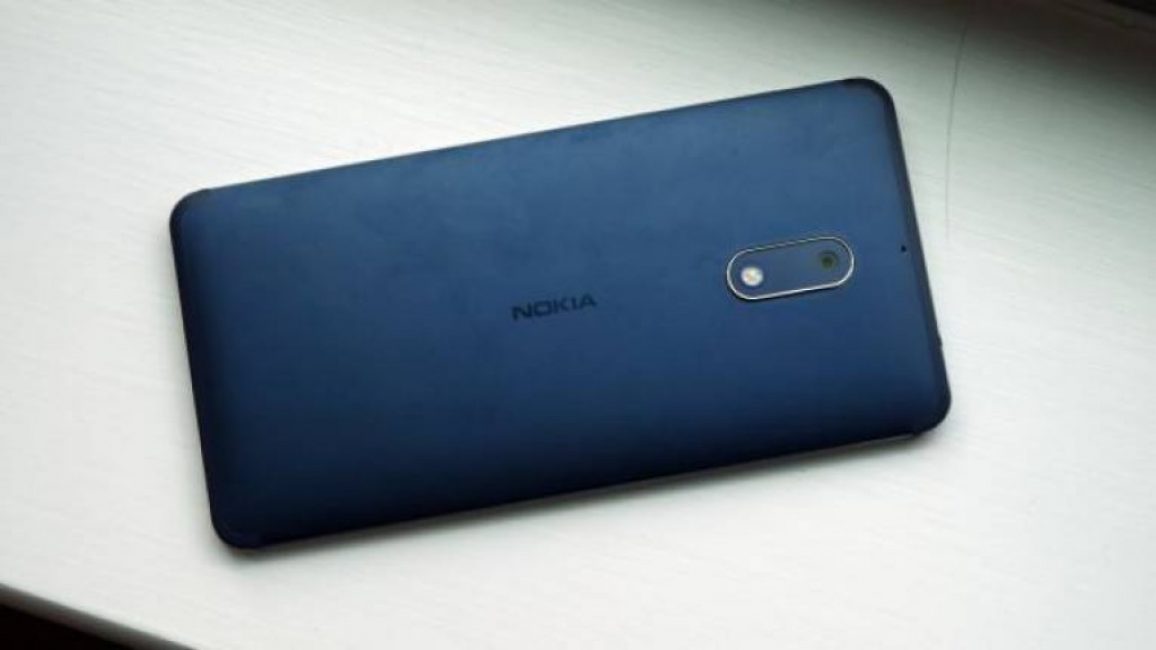
Here it is used Full resolution HD at 1920*1080, which is captivating when used, the viewing angle is up to 178 degrees, this allows you to watch movies and videos together.
Gorilla Glass only improves the properties of the IPS matrix.
Diagonal Nokia 6 Dual Sim Tempered Blue - 5.5 inches.

The screen resolution is Full HD at 1920*1080, the glass is ordinary, standard, but this does not interfere with the viewing angle of 178 degrees, as well as high-quality color rendition.
The diagonal is 5.5 inches, with a high-quality IPS matrix.

Lenovo K5 is of slightly different quality compared to the previous two, however, they are united by the presence of an IPS matrix.
Here the diagonal is 5 inches, and the HD resolution is 1280*720. The screen is covered with organic glass, but the viewing angle is no worse than the models described above.
conclusions
In conclusion, it is worth noting that the type of matrix directly determines how high-quality, bright and clear the image on the screen will be.
Therefore, when choosing technology, you must pay attention to this characteristic.
Once you have decided on the matrix, you can already select the diagonal of the device.
But do not forget that in addition to the matrix, you must pay no less attention to the screen resolution.
How more pixels resolution, the higher the clarity of the transmitted image.
For example, if you take a TV with an IPS matrix, Full-HD function and a resolution of 1920x1080 pixels, then you will experience an unforgettable experience in image quality when watching movies.
It can also be emphasized that monitors with this type of matrix are worth buying for photo editors, designers, etc., since they best convey colors and shades, and also have high clarity and brightness.
Due to the fact that the type has the largest viewing angle among all matrices, colors do not lose their color and brightness from any viewing point.
This type of matrix is also perfect for gamers, because the picture on the screen will be clear, rich and will provide maximum immersion in the game, and the LED backlight will significantly reduce eye fatigue during prolonged gaming.
Also, excellent rendering of light and shade will provide extreme sensations in the horror genre.
In conclusion, I advise you to watch the thematic video at the link:
IPS and non-IPS matrix on a tablet
IPS matrix - what is it? Technology overview
What is important when choosing a monitor? Resolution, screen diagonal, refresh rate, response time? Undoubtedly, but it is also important to decide which matrix is needed, because a number of characteristics that directly influence the choice depend on its type. In some cases, the requirements are the same, for which certain monitors are suitable. In other cases, different characteristics are required, and some screens will definitely have to be excluded from the selection. What types of monitor matrices exist, how they differ, what are their differences - we’ll talk about this.
Modern monitors
Gone are CRT displays made using a vacuum tube (kinescope). They were bulky, heavy, and, naturally, absolutely not suitable for use in mobile technology. They have been replaced by monitors whose screens are made of liquid crystals, hence the name LCD displays, or in foreign words – LCD (Liquid Crystal Displays).
I won’t go into detail about the advantages and disadvantages, they are known, and not so important now, that’s not what we’re talking about today. You need to understand what types of matrices are used in monitors, what is their difference, in which cases it is more reasonable to use one type, and in which – another.
TN (Twisted Nematic)
One of the oldest types of matrices, still relevant and used. Currently, a modified version of it, labeled TN+film, is used. Its popularity is based on two main advantages: speed (low response time and latency) and low price. Indeed, a response time of about 1 ms is par for the course.
Even the shortcomings inherent in this screen manufacturing technology cannot put it to rest. And there are enough minuses. These include small viewing angles, poor color rendering, low contrast, and insufficient black depth. Although, if the screen is located directly in front of the owner’s eyes, then the problem with viewing angles somewhat reduces its severity.
The situation is also worsened by the fact that different matrices from different manufacturers may differ significantly from each other. If expensive gaming laptop models or gaming monitors can have a quite passable screen, then in budget devices the display quality can be very mediocre.
How it works
The screen itself is a “sandwich” of two polarizing filters, between which there are electrodes on transparent substrates on both sides of the screen, two metal plates and, in the middle, a layer of liquid crystals. A light filter is installed on the outside of the screen.
Grooves are applied to the glass plates, and in a mutually perpendicular direction, which sets the initial orientation of the crystals. Thanks to this arrangement of grooves, the liquid crystals are twisted into a spiral, which is where the name of the Twisted Nematic technology comes from.
If there is no voltage on the electrodes, then the crystals arranged in a spiral rotate the plane of polarization of the light so that it passes through the second (external) polarizing filter. If a voltage is applied to the electrons, then, depending on the level of this voltage, the liquid crystals unfold, changing the intensity of the passing light. At a certain voltage, the plane of polarization of the light will not change, and the second filter will completely absorb the light.
The presence of two electrodes improves energy efficiency, and partial rotation of the crystals has a beneficial effect on the performance of the matrix.
Due to the fact that in the absence of voltage the crystals transmit light, when defects occur in the matrix (“broken pixels”) they appear as a luminous white dot. In other technologies, such dots are dark.
You can identify the TN matrix “by eye” by looking at the switched-on screen at an angle. And the larger it (the angle) is, the more faded the colors will become, the less contrast the image will become. In some cases, it is even possible to invert colors.
IPS (In-Plane Switching)
Monitors with such a matrix are now the most common competitors to monitors with a TN screen. Almost all the shortcomings of the latter were overcome, unfortunately, sacrificing the advantages that the previous technology had. Monitors with an IPS matrix are a priori more expensive and have a longer response time. For gaming systems, this may be a significant argument for choosing TN.
But for those who professionally work with images, who need high-quality color rendition, a wide color gamut, monitors with such a matrix are the best choice. In addition, there are no problems with viewing angles, the black color is much more similar to black, and does not look like a certain shade of gray, as often happens on TN screens.
How it works
 Between the two polarizing filters there is a layer of control microfilm transistors and a layer of liquid crystals having filters of three primary colors. The crystals are located along the plane of the screen.
Between the two polarizing filters there is a layer of control microfilm transistors and a layer of liquid crystals having filters of three primary colors. The crystals are located along the plane of the screen.
The planes of polarization of the filters are perpendicular to each other, therefore, in the absence of voltage, light passing through the first filter and polarized in one plane is blocked by the second filter, producing deep blacks. By the way, this is why if “ dead pixel“On the screen it looks like a black dot, and not white, as is the case with TN matrices.
When voltage appears on the control electrodes, the crystals again rotate along the plane of the screen, transmitting light. This leads to one of the disadvantages of the technology - longer response time. This is due precisely to the need to rotate the entire array of crystals, which wastes time. But it provides viewing angles up to 178° and excellent color rendition.
There are also disadvantages to this technology. This is more power consumption, since the location of the electrodes on only one side forced an increase in voltage to ensure rotation of the entire array of crystals. The lamps used are also more powerful than in the case of TN, which further increases energy consumption.
IPS options
The technology does not stand still; improvements are being made to it, which have significantly reduced response time and price. So, there are the following options for IPS matrices:
- S-IPS (Super-IPS). Second generation of IPS technology. The screen has a slightly modified pixel structure, improvements have been made to reduce the response time, bringing this parameter closer to the characteristics of TN matrices.
- AS-IPS (Advanced Super-IPS). The next improvement to IPS technology. The main goal was to increase the contrast of S-IPS panels and increase their transparency, becoming closer in this parameter to S-PVA.
- H-IPS. The structure of the pixels has changed, the density of their placement has increased, which makes it possible to further increase the contrast and make the image more uniform.
- H-IPS A-TW (Horizontal IPS with Advanced True Wide Polarizer). Developed by LG. It is based on an H-IPS panel, to which a TW (True White) color filter has been added, which has improved the white color. The use of polarizing film from NEC (Advanced True Wide Polarizer technology) made it possible to get rid of possible glare at large viewing angles (“glow effect”) and, at the same time, increase these angles. This type of matrix is used in professional monitors.
- IPS-Pro (IPS-Provectus). Developed by BOE Hydis. The interpixel distance has been reduced, viewing angles and brightness have been increased.
- AFFS (Advanced Fringe Field Switching, sometimes called S-IPS Pro).
- e-IPS (Enhanced IPS). An increase in light transmission has made it possible to use more economical and cheaper backlight lamps. The response time has decreased, reaching values of 5 ms. Monitors with such matrices usually have a diagonal of up to 24 inches.
- P-IPS (Professional IPS). Professional matrices with 30-bit color depth, an increased number of possible subpixel orientations (1024 versus 256 for the others), which improved color rendition.
- AH-IPS (Advanced High Performance IPS). Matrices of this type are distinguished by the largest viewing angles, high brightness and contrast, and short response time.
- A development from Samsung that makes improvements to the original IPS technology. The company did not disclose details, but it was possible to reduce power consumption and make the response time similar to S-IPS. True, the contrast has deteriorated somewhat, and the uniformity of illumination is not so smooth.
VA (Vertical Alignment)/MVA (Multi-Domain Vertical Alignment)
Technology developed by Fujitsu. In many ways, such screens occupy an intermediate position between TN and IPS options. Thus, viewing angles and color reproduction are better than TN, but worse than IPS. The same goes for response time. At the same time, their cost is lower than that of IPS.
How it works
 The principle of operation follows from the name (or the name reflects the principle of operation of this technology). The crystals are located vertically, i.e., perpendicular to the substrate. In the absence of voltage, nothing interferes with the passage of light through the crystals, and a second polarizing filter completely blocks the light and provides deep blacks. This is one of the advantages of technology.
The principle of operation follows from the name (or the name reflects the principle of operation of this technology). The crystals are located vertically, i.e., perpendicular to the substrate. In the absence of voltage, nothing interferes with the passage of light through the crystals, and a second polarizing filter completely blocks the light and provides deep blacks. This is one of the advantages of technology.
When voltage is applied, the crystals unfold, allowing color to pass through. In the first matrices the viewing angle was very small. This was corrected in a modified version of the technology - MVA, where several crystals were used, located one after another and deflecting synchronously.
VA/MVA options
There are several varieties of this technology, to the development of which different companies have had a hand:
- PVA (Patterned Vertical Alignment). Samsung presented its version of the technology. Details have not been disclosed, but PVA has slightly better contrast and is slightly less expensive. In general, the options are very close and often no distinction is made between them, indicating MVA/PVA.
- S-PVA (Super PVA). Joint development of Sony and Samsung. Improved viewing angles.
- S-MVA (Super MVA). Developed by Chi Mei Optoelectronics/Innolux. In addition to increasing viewing angles, contrast has been improved.
- A-MVA (Advanced MVA). Further development of S-MVA from AU Optronics. Managed to reduce response time.
This option of matrices is the optimal compromise between cheap, but with a lot of shortcomings, TN, and higher quality, but more expensive IPS. Perhaps the only drawback of MVA is the lack of color rendering as the viewing angle increases, especially in midtones. IN everyday use This is almost invisible, but professionals working with images may have doubts about such matrices.
OLED (Organic Light Emitting Diode)
A technology that is significantly different from those used today. The cost of matrices, especially large diagonals, and the complexity of production have so far prevented the widespread use of this technology in the production of monitors. Those models that exist are expensive and rare.
How it works
 The technology is based on the use of carbon organic materials. When energized, they emit a certain color, and when not energized, they are completely inactive. This allows, firstly, to completely get rid of the backlight, and secondly, to provide an ideal depth of black color. After all, nothing glows or is filtered, therefore there can be no complaints about the black color.
The technology is based on the use of carbon organic materials. When energized, they emit a certain color, and when not energized, they are completely inactive. This allows, firstly, to completely get rid of the backlight, and secondly, to provide an ideal depth of black color. After all, nothing glows or is filtered, therefore there can be no complaints about the black color.
OLED screens provide high brightness and contrast values, excellent viewing angles without distortion. Energy efficiency at high level. The response speed is inaccessible even to TN matrices.
Still, a number of shortcomings are currently holding back the use of such screens. This includes a short operating time (screens are prone to “burn-in” - an effect that was inherent in plasma panels), a complex production process with a fairly big amount defects, which increases the cost of such matrices.
QD (Quantum Dots)
Another promising technology based on the use of quantum dots. At the moment, there are few monitors made using this technology, and they are not cheap. The technology makes it possible to overcome almost all the disadvantages inherent in all other versions of matrices used in displays. The only drawback is that the black depth does not reach the level of OLED screens.
How it works
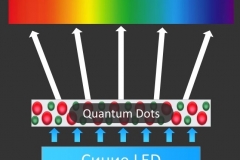 The technology is based on the use of nanocrystals ranging in size from 2 to 10 nanometers. The difference in size is not accidental, because this is where the whole trick lies. When voltage is applied to them, they begin to emit light, with a certain wavelength (i.e., a certain color), which depends on the size of these crystals. The color also depends on the material from which the nanocrystals are made:
The technology is based on the use of nanocrystals ranging in size from 2 to 10 nanometers. The difference in size is not accidental, because this is where the whole trick lies. When voltage is applied to them, they begin to emit light, with a certain wavelength (i.e., a certain color), which depends on the size of these crystals. The color also depends on the material from which the nanocrystals are made:
- Red color – size 10 nm, alloy of cadmium, zinc and selenium.
- Green color - size 6 nm, alloy of cadmium and selenium.
- Blue color – size 3 nm, a compound of zinc and sulfur.
Blue LEDs are used as illumination, and quantum dots responsible for green and red colors are applied to the substrate, and these dots themselves are not ordered in any way. They are just mixed together. The blue light from the LED hitting them causes them to glow at a specific wavelength, forming a color.
This technology allows you to do without installing light filters, since the desired color has already been obtained in advance. This improves brightness and contrast, since it is possible to get rid of one of the layers that make up the screen.
Unlike OLED, black depth is slightly lower. The cost of such screens is still high.
Comparison of matrices made using different technologies
The table contains a brief comparison of the described types of matrices, from which it can be clear where certain types of screens are strong and where they fall short.
| Matrix type | TN | IPS | MVA/PVA | OLED | QD |
| Response time | Low | Average | Average | Very low | Average |
| Viewing Angles | Small | Good | Average | Excellent | Excellent |
| Color rendition | On the low | good | Good, slightly worse than IPS | Excellent | Excellent |
| Contrast | Average | good | good | Excellent | Excellent |
| Black depth | Low | Good-excellent | Excellent | Excellent | Slightly worse than OLED |
| Price | Low | Medium-high | Average | High | High |
Conclusion. Types of monitor matrices - which ones to choose?
 not spoiled for choice, in most cases either TN or IPS screens. With the rare exception of any expensive, high-status devices, which use more expensive types of matrices.
not spoiled for choice, in most cases either TN or IPS screens. With the rare exception of any expensive, high-status devices, which use more expensive types of matrices.
Users of regular monitors can choose whatever their heart desires and their finances allow. To save money, when it comes to games or office work, a monitor with a TN screen will do just fine.
A universal solution is a monitor with an IPS matrix, or, alternatively, MVA. Wide viewing angles, black color that looks more like real black, and excellent color rendition are guaranteed. The only question is cost and longer response time than TN. However, gaming monitors on such matrices perform excellently, and if the goal is to save money at all costs, then it’s definitely worth considering this option.
Well, professionals in general, in fact, have no alternatives. The choice is between just IPS and again IPS, but with some addition - IPS-Pro, H-IPS, etc.
Promising options are still poorly represented on the market, but if you really want to have something special, then why not?
In-Plane Switching(also Super Fine TFT) - technology for manufacturing liquid crystal displays.
IPS or SFT (Super Fine TFT) technology was developed by Hitachi and NEC in 1996 as an alternative to TN (Twisted Nematic) technology.
These companies use these two different names for the same technology - NEC uses "SFT" and Hitachi uses "IPS". The technology was intended to overcome the shortcomings of TN+ film. Although IPS was able to increase the viewing angle to 178°, as well as high contrast and color reproduction, the response time remained at a low level. A TN matrix usually has better response than IPS, but not always. So, when transitioning from gray to gray, the IPS matrix behaves better.
This matrix is also pressure resistant. Touching a TN or VA matrix results in a “excitement” or a certain reaction on the screen. The IPS matrix does not have this effect.
In addition, ophthalmologists confirm that the IPS matrix is more comfortable for the eyes.
Thus, the IPS matrix provides a bright and clear picture regardless of viewing angles, which is optimal for surfing the Internet and watching movies. But the most important thing is for image processing and viewing photos.
At the moment, matrices made using IPS technology are the only LCD monitors that transmit the full RGB color depth - 24 bits, 8 bits per channel.
Previously, IPS technology was used exclusively for professional monitors, since it is the most adequate of all LCD panel production technologies to convey the color gamut. However, LG has taken a revolutionary step to bring it to the mass market.
As of 2012, many monitors on IPS matrices (e-IPS manufactured by LG.Displays) with 6 bits per channel have already been released. Older TN matrices are 6-bits per channel, just like the MVA part.
IPS has now been superseded H-IPS technology, which inherits all the advantages of IPS technology while simultaneously reducing response time and increasing contrast. The color quality of the best H-IPS panels is not inferior regular monitors CRT. H-IPS and cheaper e-IPS are actively used in panels from 20" in size. LG Display, Dell, NEC, Samsung, Chimei remain the only manufacturers of panels using this technology.
Types of IPS matrices
IPS (Super TFT). This is the basic level of technology. The advantage is wide viewing angles. Most panels also support true-to-life color reproduction (8-bits per channel).
S-IPS (Super-IPS). This type of matrix inherits all the advantages of IPS technology while simultaneously reducing response time.

AS-IPS (Advanced Super-IPS)- developed by Hitachi Corporation. The improvements mainly concerned the contrast level of conventional S-IPS panels, bringing it closer to the contrast of S-PVA panels. This type of panel improves mainly the contrast ratio of the extended color gamut of traditional S-IPS panels to a level where they are second only to some S-PVA panels.
H-IPS (Horizontal IPS). An even greater contrast and a visually more uniform screen surface have been achieved.
H-IPS A-TW (Horizontal IPS with Advanced True Wide Polarizer)- developed by LG Display for NEC Corporation. It is an H-IPS panel with a TW (True White) color filter to make the white color more realistic and increase viewing angles without distorting the image (the effect of glowing LCD panels at an angle is eliminated - the so-called “glow effect”) . Advanced True Wide Polarizer technology uses NEC polarizing film to achieve wider viewing angles and eliminate glare when viewed from an angle. This type of panel is used to create high quality professional monitors.
IPS-Pro (IPS-Provectus). IPS Alpha panel technology with a wider color gamut and contrast comparable to PVA and ASV displays without corner glow.
AFFS (Advanced Fringe Field Switching, unofficial name - S-IPS Pro). The increased power of the electric field made it possible to achieve even greater viewing angles and brightness, as well as reduce the interpixel distance. AFFS-based displays are mainly used in tablet PCs, on matrices manufactured by Hitachi Displays.
e-IPS (Enhanced IPS) uses backlight lamps that are cheaper to produce and have lower energy consumption. The diagonal viewing angle has been improved, the response time has been reduced to 5 ms.
P-IPS (Professional IPS) provides 1.07 billion colors (30-bit color depth). More possible subpixel orientations (1024 versus 256) and better true color depth.
AH-IPS (Advanced High Performance IPS). Improved color rendering, increased resolution and PPI, increased brightness and reduced power consumption.
PLS technology
PLS matrix (Plane-to-Line Switching) was developed by Samsung as an alternative to IPS and was first demonstrated in December 2010.
Advantages:
- pixel density is higher compared to IPS (and similar to *VA/TN);
- high brightness and good color rendition;
- large viewing angles;
- full sRGB coverage;
- low power consumption comparable to TN.
Flaws:
- response time (5–10 ms) comparable to S-IPS, better than *VA, but worse than TN;
PLS and IPS
Samsung has not provided a description of PLS technology. Comparative studies made by independent observers IPS matrices and PLS under a microscope did not reveal any differences. The fact that PLS is a type of IPS was indirectly recognized by Samsung itself in its lawsuit against LG: the lawsuit alleged that the AH-IPS technology used by LG is a modification of PLS technology.
